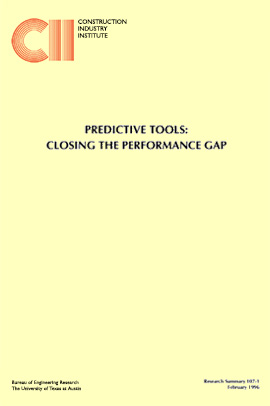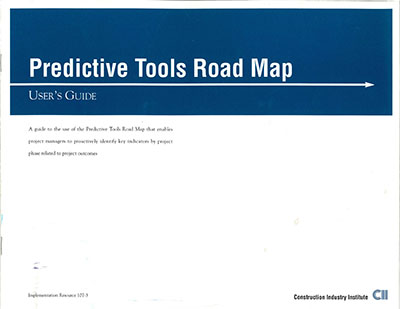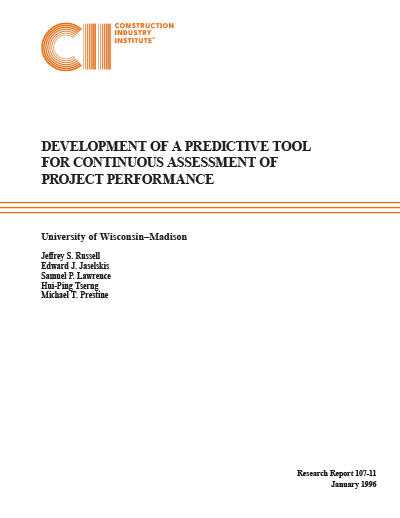
Predictive Tools: Closing the Performance Gap
“Why can’t we predict project problems soon enough so that they can be managed, solved, or prevented?”
With all of the tools and systems available in the construction industry to the project manager, why do we still have surprise cost overruns, schedule delays, and unsuccessful projects? The construction industry requires comprehensive predictive tools that will allow measurement of critical indicators and accurate predictions of project success while a project is progressing. One goal of CII is to provide the industry with information, techniques, and processes that will more accurately predict project outcome.
The CII Predictive Tools Research Team objective was to develop a process using “predictive tools” that assists a project team during all project stages. Predictive tools(systems or processes) are a project team’s means to monitor and control all aspects of a project to ensure success. Success is normally defined by meeting the project criteria of cost, schedule, safety, and performance.
The research team found that many predictive tools, systems, and processes are available to monitor and track a project, but the industry has neither combined nor accumulated these tools into a comprehensive package. This is the required next step in “closing the performance gap” for the continuous improvement process for the construction industry.
The research team focused on developing a predictive tool process that would:
- provide a comprehensive project data analysis tool to monitor a project continually (the Continuous Assessment of Project Performance—CAPP).
- develop a detailed process to identify critical procedures that should be in place through the various stages of a project (the Predictive Tools Road Map and User’s Guide)
- provide a single access tool to help a project team identify important CII documents for predictive tools (the Index of CII Tools).
The payback for project teams, and in fact everyone involved with a project, is improved project performance through:
- Improved pre-project planning
- Continuous performance measurement
- Early warning and identification of problems
- Preventative and corrective action planning
This publication summarizes two important tools, the CAPP and the Predictive Tools Road Map, both of which a project team can utilize during all phases of a project to improve the predictability of project success. The appendix provides an overview of the development of the Index of CII Tools, which was key in the formation of the Road Map.
The team developed a computer program “Continuous Assessment of Project Performance (CAPP)” to help project managers predict project outcomes from start of detailed design through construction completion. The team analyzed data from 54 completed projects and identified 76 continuous project variables that were helpful in predicting a project’s outcome. (RS107-1, p. 3)
Data on these variables fed the CAPP database. Following are several examples:
- Owner Expenditures – The amount of budgeted capital expended by the owner on the project. This includes design, procurement, and construction costs, as well as contingency, land, license fees, owner management staff, and interest on borrowed capital.
- Contractor Construction Effort-Hours Expended – The number of craft efforthours expended during construction by all prime contractors and subcontractors in the form of field labor after budget appropriation
- Invoices Paid by Contractor – The total dollar amount of invoices paid by the contractor organization (includes costs for material, equipment, labor, and overhead and profit paid to subcontractors and suppliers)
The Road Map was designed to assist project teams in the successful execution of capital projects. The research team focused on cost, schedule, safety, and project objectives to identify indicators or problems and how they relate to project outcomes. A typical project life cycle was divided into six phases common within the industry: Business Planning, Pre-Project Planning, Design and Procurement, Construction, Commissioning and Startup, and Operations. The time frame in which the objectives were examined started with the business planning phase and continued through facility operation. (RS107-1, p. 9)
The figure below explains how to read the Road Map.



